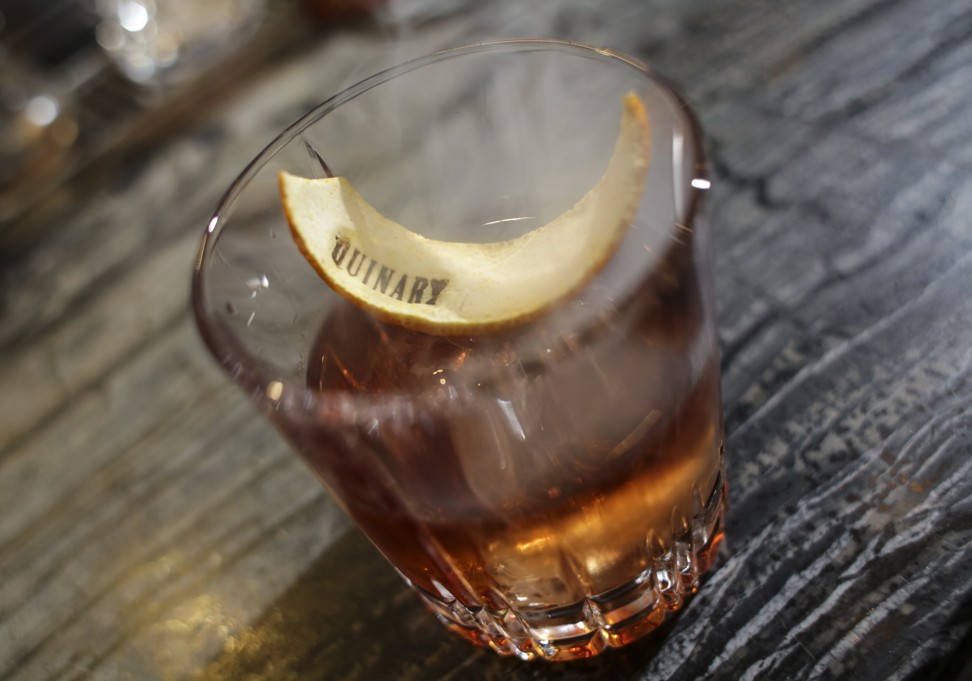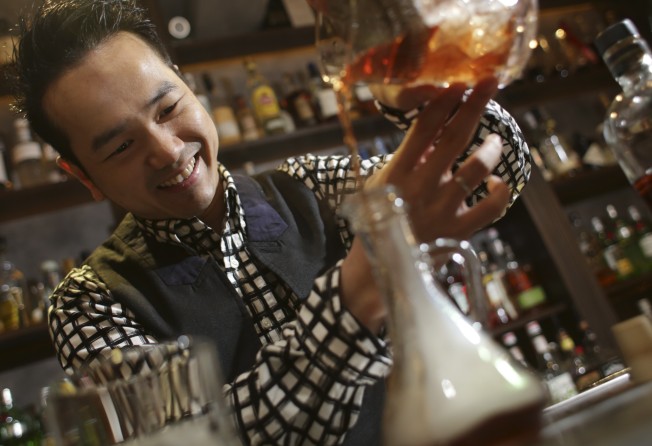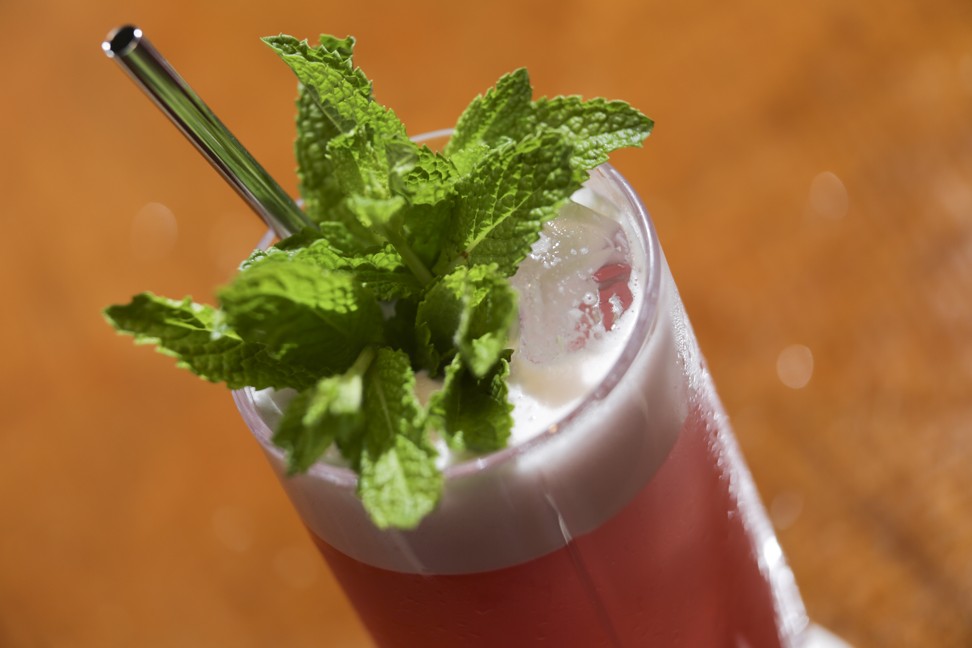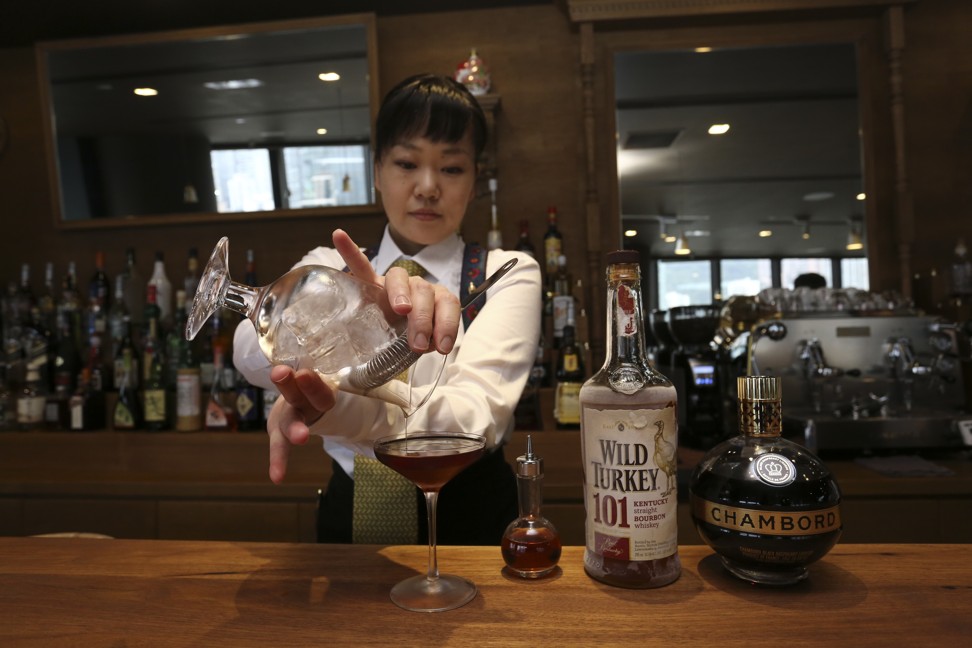
Hong Kong’s new wave of cocktail bartenders mix it up a little differently
A lot has changed since the flair bartending era of the 1990s, and today’s mixologists use a variety of new techniques, equipment and ingredients to create some amazing concoctions. We talk to four of the city’s favourites

Bartenders who started out in the 1990s aspired to be Tom Cruise’s character in the film Cocktail where he deftly threw bottles in the air – called flairing – and picked up sultry women.
So much has changed since then, as bartenders have become more than just pretty faces. They are now highly skilled at creating drinks using a variety of spirits and ingredients, and are now becoming promoted as much as well-known chefs.
Bartenders – also known as mixologists – from establishments such as New York’s Please Don’t Tell (better known as PDT) and The Dead Rabbit, Tokyo’s Bar High Five, and Candelaria from Paris have come to Hong Kong to give customers a taste of their style while making them thirsty for better cocktails locally.

Lai’s career went through a series of stops and starts in various food and beverage ventures in Hong Kong and the mainland, until he finally met his business partner, Charlene Dawes in 2011. They started Quinary on Hollywood Road, followed by Origin, Envoy and VEA.
In almost two decades Lai has seen cocktails evolve in the city from pina coladas and lychee martinis to his signature Earl Grey martini that comes with whiffs of smoke.
“The customers want more sophisticated cocktails. They are also interested in learning about the spirits in their drinks. When we explain what they are, they search for them online on the spot,” Lai says.
He adds that while in other countries, mixologists are considered as important as chefs, flying to different countries for guest-bartending stints, the cocktail scene in Hong Kong hasn’t reached that level.
“It’s good to invite other mixologists [to Hong Kong bars] to allow guests to experience new things. We had a Korean bartender here who served soju-style cocktails. It’s a good way to share ideas,” Lai says.

“Bartenders have become more prominent in the food and beverage scene thanks to foodies who are keen on good restaurants, and good drinks too,” he says. “There’s more interaction between bartenders and guests than chefs. I meet guests and figure out what they are in the mood for.”

As beverage manager for all the Mandarin Oriental’s F&B outlets in the hotel, with the latest being Rum Barber Pop-Up featuring high-end rums and rum-based cocktails in the hotel’s barber shop, Prabowo works closely with chefs and pastry chefs to develop drinks that complement the food.
“We’re now using herbs, flowers, spices and essential oils,” he says, adding that in the last five years, kitchen equipment such as sous-vide machines are also used in making memorable cocktails. “I love to create something new and different.” He says that on his days off, he visits wet markets tolook for new fruits, spices or herbs to experiment with.

A mixologist only mixes drinks, but as a bartender I do everything. It’s more humble to call yourself that
But it was during his time at the Lobster Bar & Grill at the Island Shangri-La that Olino learned professional bartending and further upped his game when he competed in the Diageo 2014 World Class bartending competition.
“It was very stressful but fun. I had to do a lot of research, find the right ingredients, know the techniques, and how to present the drinks to the judges and audience,” he recalls.
He says the bar scene in Hong Kong has become more inspiring, with more talent and flavours. “Back then people were not resourceful when it came to ingredients. Now there are so many things out there, we’re trying to figure out what to do with them.”
Olino observes the demand for good drinks comes from consumers, who even give him suggestions to improve the drinks. “In 2012 someone suggested we should do barrel-aged gin, and that gave the gin another flavour.”

She was with legendary bartender Hidetsugu Ueno when Bar High Five had a pop-up at the Landmark Mandarin Oriental last year, serving drinks that didn’t have fancy garnishes.
“My boss wants to focus on the flavour of the drink,” Naganuma explains. She says that Hidetsugu has his own technique in stirring, shaking and pouring for each concoction, and that she follows this rigorously.
In Japan, Naganuma says bartenders can be propelled into stardom if they manage to win a gruelling competition that tests their technique and knowledge.
“They work from 2pm to 2am, and then eat dinner, and then start practising. It’s really hard to prepare for a competition,” she says.
One winner is Michito Kaneko, who was named the World Class Global Bartender of the Year 2015. He was in Hong Kong in January and travels around the region, doing pop-ups and demonstrations, as well as running his own establishment, Lamp Bar in Nara, Japan.
Lai at Quinary enjoys sharing his knowledge and has set up a Facebook page for local bartenders to ask questions and pass along tips. “No one was sharing things and I had to get them to start the conversation,” he says. “I want to help get Hong Kong bartenders on the map.”
Mixologist or bartender? Olino says the debate about using the title bartender or mixologist began about three years ago, but says most people prefer to be called a bartender. “A mixologist only mixes drinks, but as a bartender I do everything. It’s more humble to call yourself that.”
Bar De Luxe
29/F-30/F, Asia Pacific Centre, 8 Wyndham Street, Central
Tel: 3706 5716
Dr Fern’s Gin Parlour
Shop B31A, first basement, Landmark Atrium, 15 Queen’s Road Central
Tel: 2111 9449
Quinary
56-58 Hollywood Road, Central
Tel: 2851 3223
Rum Barber Pop-Up
The Mandarin Barber
2/F, Mandarin Oriental, 5 Connaught Road Central
Tel: 2825 4088